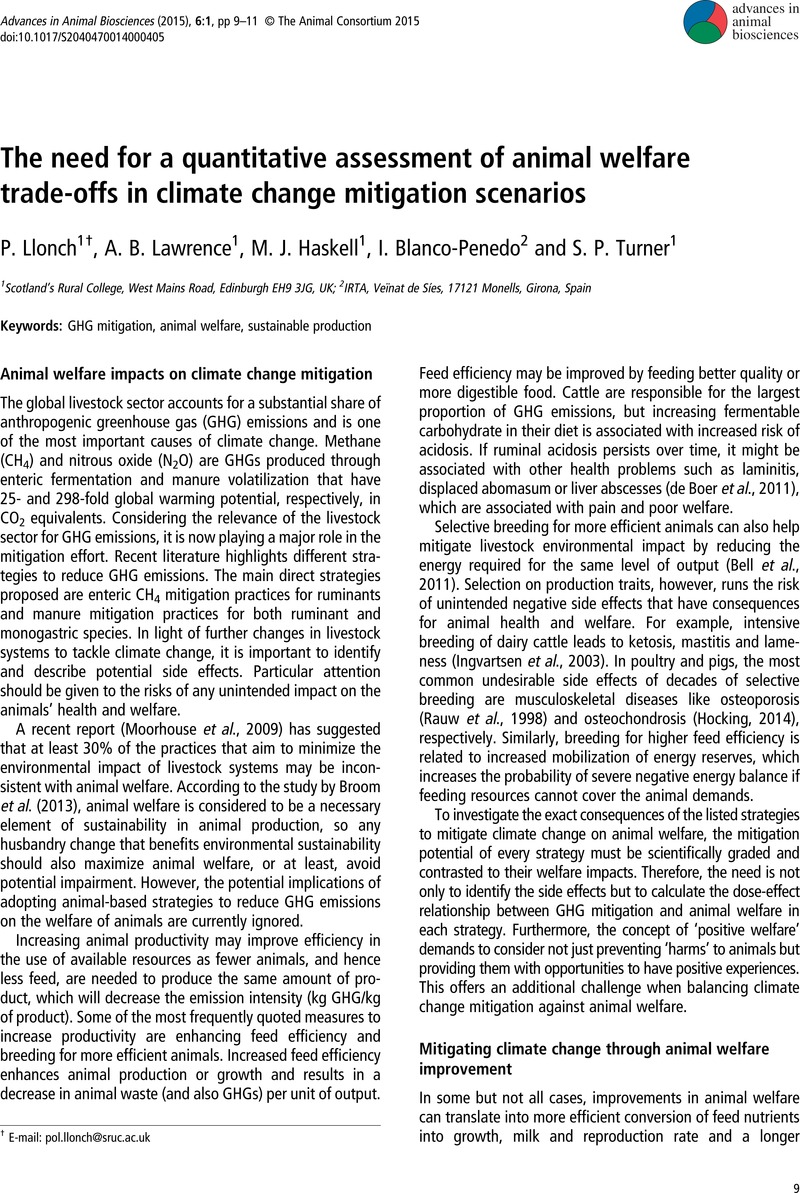Crossref Citations
This article has been cited by the following publications. This list is generated based on data provided by Crossref.
Herzog, Anna
Winckler, Christoph
and
Zollitsch, Werner
2018.
In pursuit of sustainability in dairy farming: A review of interdependent effects of animal welfare improvement and environmental impact mitigation.
Agriculture, Ecosystems & Environment,
Vol. 267,
Issue. ,
p.
174.
Tallentire, Craig W.
Edwards, Sandra A.
Van Limbergen, Tommy
and
Kyriazakis, Ilias
2019.
The challenge of incorporating animal welfare in a social life cycle assessment model of European chicken production.
The International Journal of Life Cycle Assessment,
Vol. 24,
Issue. 6,
p.
1093.
Lanzoni, L.
Reeves, M.C.
Waxenberg, K.
Ramsey, R.
Atzori, A.S.
Bell, J.
Rees, R.M.
Vignola, G.
and
Dwyer, C.M.
2025.
The carbon cost of impaired welfare on sheep farms.
animal,
Vol. 19,
Issue. 2,
p.
101390.



